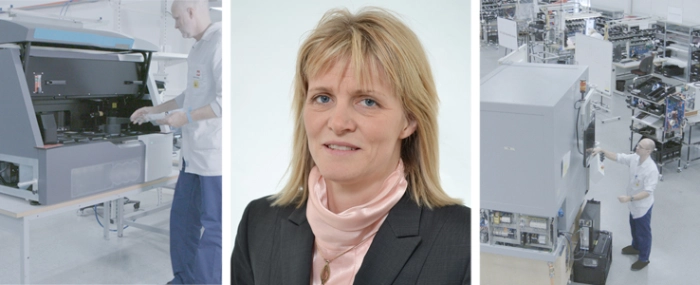
© Sanmina
Electronics Production |
Five factors to consider when selecting an EMS partner
Over the past two decades, medical device companies have moved away from the complexities of building products so that they can focus on product IP, handing over most aspects of manufacturing operations to electronic manufacturing service (EMS) providers.
By Charlotta Linnell
Several factors have contributed to this growing relationship: increasing product complexity due to technology innovation and the rise of personalized medicine, stringent regulatory requirements and the pressure to deliver product more quickly at lower costs. EMS providers have become experts in all of these areas on behalf of medical device companies, freeing them to focus on medical device innovation.
Some EMS providers are now taking it a step further, helping medical device companies solve complex problems as they design new products. During the design phase, a lot of important decisions need to be made in a short window of time and the pressure is high. All too often, a medical device company may decide to work with the first available supplier or with the first component offered to them because they don’t have the bandwidth or resources to research alternative options. Unfortunately, some single source suppliers take advantage of this situation. Getting locked in with the wrong supplier that can’t meet its commitments or getting stuck with a pricey component during the lifecycle of a regulated medical product is the unfortunate result. The only other option is for a medical device company to spend a great deal of time and expense making a change and going through all of the regulatory reviews and approvals a second time.
Top Five factors
When looking for the ideal EMS provider to partner with on the design of new medical products, medical device companies should consider five key factors:
1. Design-led manufacturing services and compliant manufacturing infrastructure. Complex medical products such as blood analyzers, digital X-ray machines or MRI machines all require a deep understanding of their functionality, materials and parts in order to produce them. EMS providers should have both proven systems-level and high-level assembly capabilities to produce complex products. This includes expertise working with multiple sophisticated technologies, moving parts, fluidics, centrifuges, electronics and user interfaces. They also must be able to make the right decisions that improve quality and ensure compliance in accordance with the most current medical regulations.
2. Highly experienced team of sourcing managers and engineers. Medical device companies should look for experts that can act as advisors during the design phase of new products, helping to make the right decisions that improve cost, quality and time to market. This team should have deep industry connections and product knowledge to propose alternative supply chain options and low-cost products that provide the same reliability and functionality as well known brands. Asking for customer references that illustrate how they’ve partnered with previous companies on new products is the best way to gauge their success.
3. Compliant manufacturing process and IT system. A manufacturing execution system (MES) platform that is integrated with a comprehensive quality management system can also ensure that production processes are ‘mistake proof,’ with parameters coded into the system that automatically prevent a product from moving from one stage of the production line to the next if it does not pass a test at each gate. This integrated IT and quality system also enables all materials required for regulated products to be tracked throughout production, with the histories recorded in an electronic device history record (eDHR) for streamlined regulatory compliance and audits.
4. End-to-end manufacturing solutions. EMS providers should have advanced services for handling all aspects of production, including prototyping, NPI, manufacturing processes, high-quality complex product assembly, test, regulatory certifications, documentation management, supplier management, as well as service and repair services. Medical device companies should also take into account that projects may vary over time and plan for the future, ensuring that their EMS partner has everything from design services, all the way through to after-market services. Retaining product knowledge within a single EMS organization ensures seamless knowledge transfer over the lifecycle of a product
5. Global footprint. An EMS provider with a global presence has access to an extensive network of talent, resources and suppliers and strong buying power that will benefit the quality and cost of final products. Newer medical device organizations are selecting larger EMS companies to prove to the medtech sector that they are working with an experienced partner that can scale with them, in order to increase confidence among potential investors.
Bringing it All Together
Today, leading EMS providers have the expertise and resources to help medical device companies make the best decisions when it comes to developing new products. EMS providers act as a trusted advisor, leveraging a highly experienced team and proven capabilities. Their end-to-end services, global reach and deep regulatory knowledge can help medical device companies navigate all of these complexities to bring high quality and compliant products to market.
About the author: Charlotta Linnell is Business Development Manager at Sanmina, with more than 20 years of experience working with original equipment manufacturers (OEMs) and electronic manufacturing services (EMS) companies in the Nordic region. Charlotta has a strong track record for providing component sourcing, supply chain design and manufacturing solutions that support the development of complex products and systems for the medical, industrial and telecommunications industries.
About the author: Charlotta Linnell is Business Development Manager at Sanmina, with more than 20 years of experience working with original equipment manufacturers (OEMs) and electronic manufacturing services (EMS) companies in the Nordic region. Charlotta has a strong track record for providing component sourcing, supply chain design and manufacturing solutions that support the development of complex products and systems for the medical, industrial and telecommunications industries.

